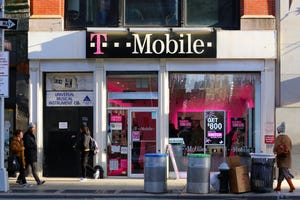Ericsson: We Can Do 500 Mbit/s Over VDSL2
Ericsson says it can achieve broadband speeds of 500 Mbit/s over copper using bonding and noise cancellation techniques
March 17, 2009

Here's an announcement that should raise some hackles within the broadband access community: Ericsson AB (Nasdaq: ERIC) says it can deliver downstream broadband access speeds of more than 500 Mbit/s using VDSL2-based technology. (See Ericsson Claims VDSL2 Breakthrough .)
That's quite the claim, given that VDSL2's top end speed under optimum conditions is 100 Mbit/s downstream and upstream, and delivers around 40 Mbit/s under real-world commercial deployment conditions.
So what's behind Ericsson's claim?
Well, Ericsson says it achieved downstream data transfer rates of more than 500 Mbit/s under lab conditions using line bonding and crosstalk cancellation techniques, known as "vectoring," to boost the potential capacity of the broadband connection.
Ericsson bonded six copper pairs and achieved its headline-grabbing speed across a 500-meter connection using spectrum up to 17 MHz, the vendor's head of product marketing for broadband networks, Don McCullough, tells Light Reading.
McCullough said the same techniques were used on longer connections, up to 1,200 meters, but wouldn't disclose the results.
And what about upstream? While Ericsson says the speed "could in principle be symmetrical," the company didn't use any vectoring in the upstream, though it believes such a test could deliver "at least" 125 Mbit/s across six bonded copper pairs.
Crosstalk cancellation
This technique reduces the "noise" from other copper pairs that interferes with, and reduces the reach of, a DSL connection. Ericsson says it used a VDSL2 reference design chipset with integrated crosstalk cancellation capabilities, and that the specific noise reduction technology deployed is currently going through the standards process at the International Telecommunication Union, Standardization Sector (ITU-T) , where it's known as G.vector. (The standard is scheduled for "consent" at the ITU-T in October this year.)
Pre-standard G.vector technology is just one of a number of approaches used to boost the capabilities of DSL lines. Last year Alcatel-Lucent (NYSE: ALU) unveiled a technology it calls SmartDSL, while multiple vendors, including AlcaLu and ECI Telecom Ltd. , have been investigating the potential of Dynamic Spectrum Management (DSM), a technology that can eliminate crosstalk. (See AlcaLu Develops 'SmartDSL' and DSL Group Forms.)
Specialist vendor Assia Inc. , which is headed by DSL guru John Cioffi, is the leading light in the DSM world. (See Sky Deploys Assia's DSM, Assia Makes DSL Greener, and Valley Wonk: DSL Man.)
Line bonding
For the line bonding techniques, Ericsson deployed a "self-developed implementation and designed the corresponding CPE [customer premises equipment] solution," according to the vendor.
Ericsson says its Ethernet-based multi-pair bonding technology is based on ITU-T specifications described in the recommendation G.998.2, also known as G.bond. [Ed note: This ITU-T recommendation was played by Sean Connery in the 1972 movie You Only Line Bond Twice.]
Line bonding is a technique commonly used by the Ethernet-in-the-first-mile specialist vendors such as Actelis Networks Inc. , Adtran Inc. (Nasdaq: ADTN), Aktino Inc. , Hatteras Networks Inc. , RAD Data Communications Ltd. , and Zhone Technologies Inc. (Nasdaq: ZHNE). (See Ethernet Access Market Update.)
What's next?
Ericsson says it doesn't have any carrier trials in progress or lined up, and that commercial availability of the technology used in this lab trial will "depend on customer demand."
And McCullough recognizes that lab conditions are different from real-world conditions. "In the real world there are different size bundles, and different qualities of copper plant," he says, though he believes there will be interest in what Ericsson has been doing from carriers in Latin America, Asia/Pacific, and Europe, where "there is a strong desire to use fiber-to-the-building [FTTB] and VDSL2 over copper [within buildings to the customer] -- there is copper installed and out there for VDSL2."
Heavy Reading chief analyst Graham Finnie, who has been immersed in high-speed access strategies and technologies in recent months, doesn't believe there will be much in the way of demand. "Six bonded pairs! That immediately says 'niche' to me," says the Brit, who believes such deployments will only be considered where fiber access deployment is too difficult to consider. (See FTTH Europe: Slow Growth Forecast.)
Ericsson is keen on fiber access too, of course, having splashed out $290 million in early 2007 buying GPON specialist Entrisphere: The Swedish giant is also sinking R&D dollars into future access technologies such as WDM-PON and 10-Gig PON. (See Ericsson Joins Cost-Cutting WDM-PON Team, GPON Gets a 10G Look, and Ericsson Buys Entrisphere.)
— Ray Le Maistre, International News Editor, Light Reading
Read more about:
OmdiaYou May Also Like










